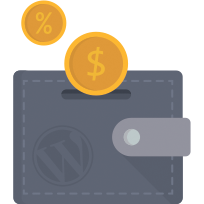
How to Choose the Ideal WordPress Theme for Your Website
Choosing a theme is one of the most important decisions you'll have to make when putting together a website. The theme you choose can, quite literally, make or break your site -- which is why the goal of this guide is to help you make the right choice for your business. (Note: For more guides in the same series, head on over to WinningWP Guides.)
-Note: WinningWP content is free to all. If you make a purchase through referral links on our site, we earn a commission (learn more).
Choosing a theme is, without doubt, one of the most important things to get right when building an online presence. Not only does a theme determine how your site looks to visitors, it also governs much of the back end workings of your online business.
With so many themes to choose from, making a decision can be daunting — but, if you need help finding a theme that works for you, you've come to the right place, as this guide will give you the information you need to make an informed decision. Let's get started!
Don't Lose Sight of Your Business Goals
A mistake many people make is jumping straight into choosing a theme, or going by design alone, which can lead to a lot of frustration. Before you get to the theme, you need to think about your business goals and how your website can help you work towards them.
To get on the right track, here are some important questions you'll need to answer:
- What are you selling?
- What are the requirements for your website?
- What are your competitors doing?
- What are the browsing and buying habits of your customer base?
- How can you keep the focus on what matters?
What Are You Selling?
This one sounds obvious, but many people lose focus of what they're actually offering to customers, and so what theme will work with what they're selling and the purpose of their site. Build your website with your product or service in mind — for example, you may have a video tutorial business, but also sell T-shirts as a secondary strand of the business. In this case, the homepage focus should be the tutorials.
On almost every page, you should be funneling as many visitors as possible to your main source of income, not toward your secondary streams.
What Are the Requirements for Your Website?
This is a bit more difficult to answer, because it requires you to look at things from an administrator's point of view. The first step is to separate front and back-end functionality. Think about what features are essential to your visitors, then figure out what you'll need to do to make that happen in the back end.
For example, if you're blogging about recipes, you may want users to be able to organize them using certain criteria. So, if you want users to be able to order recipes by cooking time, you'll need to have a filter on the front end, but also a facility in the back end where you can specify the cooking time for each recipe.
Remember that WordPress only supports a limited amount of data out of the box: If you're working with a more niche setup (beyond the likes of real estate listings, recipes or reviews), you'll most likely need to add custom fields to get the result you want.
What Are Your Competitors Doing?
A competitor analysis is an important part of any business plan, showing you how you stack up against the competition in everything from market share to product quality. When deciding on a theme, looking at your competitors' websites will give you context, let you gauge your minimum viable product, and help you to figure out what your target audience is expecting from you.
This doesn't mean you should just copy what your competitors are doing, though! A competitor analysis should give you an idea of what works and what doesn't, so you can make an informed decision on your site (and learn from others' mistakes). Don't be afraid to do your own thing.
What Are the Browsing and Buying Habits of Your Customer Base?
It won't hurt to learn a bit about customer habits in the online world. Don't forget that how you browse a website is not necessarily how others do things and — more importantly — not necessarily how your target audience will do things.
Being aware of certain aspects of behavior, such as the paradox of choice, will help you to make better decisions when building your site. The more freedom of choice you give to people, the less likely they are to make a good decision, which leads to no decision at all.
Don't get sidetracked by fancy visuals, eye-candy and other distractions. For example, many articles have claimed — and every user test has shown — that large automatic sliders are useless, yet many people choose to include them on their website because they look good.
Figure out who your target audience is, research them, talk to them, conduct tests, and ask them what they're looking for and how they'd like to use your website. Get feedback before you start, and your site will be more likely to appeal to them.
How Can You Keep the Focus on What Matters?
This is one of the most important aspects of building a website. Developers and website owners tend to lose track of the site's goals, but you'll need to keep them in mind if you want your site to achieve them! Remember: Your most likely end goal is to sell your product or service — making a beautiful website is only a means to that end.
Does research say your beautiful slider is completely useless for conversions? Get rid of it. Do psychology and surveys say your ideal color scheme should be dark blue? Ditch your modern interface and work some of that blue into it.
Don't confuse a high visitor count with a successful website. At the end of the day, your customer count is what matters — which is where conversion comes in. After all, it's better to have a website that converts 30% of its 10,000 monthly visitors than one that converts 3% of 50,000.
Invest Your Time
Once you know your business, make sure to invest some time in choosing a theme. Because of the vast number and cheap pricing of themes, many people assume this is an easy task that should take a couple of hours at most.
Even coders who are experienced in making and selling their own themes may find it difficult to make the right choice, so don't be disheartened if you don't get it right first time. You won't usually be able to live-test your theme, so you'll need to put in considerable research time.
You may even need to buy a couple before you arrive at the perfect one. Don't let this put you off: A quality custom-designed and built site will cost you at least $5,000 for the most simple (and upwards of $10,000 if it's more elaborate); a theme, on the other hand, will cost you $55 to $150. If you stand to save somewhere between $4,850 and $9,850, putting in a day or two's work to get it right is well worth it.
Getting Started
Whenever I build a new site, I like to start with the bare minimum and work my way up. I almost always start out with a clean WordPress installation and the default WordPress theme (Twenty Seventeen).
My reasoning is that Twenty Seventeen (or any of the default WordPress themes, such as Twenty Sixteen, etc) will support every properly coded plugin, including the likes of WooCommerce, bbPress and BuddyPress, which means I can set everything up as it would be on the final site. It won't look great, but it will give me valuable information on what's missing and what I need to do to fix that. I recommend either using this method, or working with a free theme that's similar to what you want.
The goal is to add some content and set everything up in the admin as you would for the final site, as this will give you a good base on which to try out different themes.
Testing Themes
The first question you need to ask yourself is: Do I want a free theme or a paid theme? I'd almost always advise a high-quality paid theme. While there are some exceptions, most site owners want to make money (i.e., their site is a business), and a premium theme with good support will give the best possible platform on which to display your content.
This will set you back anywhere between $55 and $200. I advise not being too conservative with your funds; if a theme costs $200 but is a perfect fit, it's well worth the investment. The more important question is: How do you decide if it's indeed a good fit? To answer that, I tend to use a combination of the following:
- Using the theme demo.
- Talking to support.
- Requesting a trial.
- Finding reviews about the theme.
- Researching the author.
Using the Demo
A theme's demo is really valuable in showing you what you can expect, and so should be your first port of call. It'll no doubt showcase the best side of the theme, so, if you don't like what you see, move on — it won't get better!
You'll be able to see all of the elements available, such as plugin support, built-in pages, how single posts look, custom widgets, shortcodes, and the like. Spend ample time familiarizing yourself with the demo, or even make a checklist of the features you need so you can see how it measures up.
The demo will also give you a good speed demonstration. Speed should be important to you, because it directly translates into conversions. You do have to be aware, though, that the more features your theme has, the slower it'll become. As long as you're satisfied with the demo's speed, all should be well when you implement it.
Talking to Support
Getting in touch with support is a good way to estimate the level of attention you'll receive. Good support pre-purchase but bad support post-purchase is a common complaint, but it's still worth investigating.
Don't be afraid to ask questions or share information on your website's requirements. Companies that care about their business (there are many) will tell you if their theme's not right for you. Try to be as thorough as possible, as it's better to stumble into problems pre-purchase.
A related quick-check is to take a look at the documentation the company has available — a theme with extensive and easy-to-follow documentation is a lot more likely to be a good one!
Requesting a Trial
It isn't terribly common, but authors may either give you the theme for a free trial or — more likely — offer a refund if you aren't happy. I would personally trust a company a lot more if they offered this option, but I do understand why it isn't available in many cases.
If you can get a trial, that's great! You'll be able to apply it to your test site and see exactly what's what. Take a look at the 'Testing a Theme' section below to make sure you get the most from your trial.
Finding Reviews
If the vendor has reviews on their website, or you can find someone who's already using the theme, their opinion may be crucial in helping you to make a decision. Keep a watchful eye on comments about post-sales support, as this is one of the most valuable assets you can have. In fact, I'd rather buy a theme that's 90% perfect with top-notch support than one that's 100% perfect with subpar support.
Many large sites have top ten or top 20 lists where you may find your chosen theme. In my experience, authors usually select ones that look good and are reasonably popular at the time, though, so inclusion on one of these lists isn't necessarily anything to go by.
If a theme keeps appearing in recommendation lists, though, this is a good sign. While its appearance may still not be indicative of its quality, it will mean it's maintained continuously, which is a hallmark of a good theme.
Researching the Author
The general quality of an author's work, his/her Twitter profile, Facebook profile, Github projects and other online presences may shed some light on the quality of the theme. If the author is well known, has a bunch of followers, has some open source projects and is generally active in the community, it's a good indication that quality work is to be expected.
If the author's followed on Twitter by a large company or prominent person in the WordPress ecosystem (Automattic, Matt Mullenweg, Human Made, WooThemes, Tom McFarlin, Andrew Nacin, and so on) you can count that as a good point, too.
Testing a Particular Theme
So, once you've gotten your hands on a theme, what then? First of all, install and activate it, then familiarize yourself with the options within. Check out our guide if you need help with installing and setting up themes.
A quick note about the initial install: Many themes look nothing like their demos when you install them. This is completely normal, so don't be too worried about that. Take a look at the documentation to set up your theme, or use the demo content from the author if it's available.
Here's a handy checklist for working with themes:
- Run automated tests.
- View test suite content.
- Add own content.
- Run a speed test.
- Check code quality (optional).
Running Automated Tests
This one sounds scary, but anyone can do it with a great plugin named Theme Check. Just install and activate, and run the test on your theme from the appearance menu.
The plugin checks the theme against the official theme review guidelines. The homepage of the guidelines isn't that detailed, but the plugin checks for hundreds of little things such as:
- whether the theme complies with the required accessibility standards
- whether all required functions are implemented
- whether all required template files are implemented
- whether the theme uses any outdated functions
- whether the plugin uses any unsecure functions.
If you see a lot of issues popping up during a theme test, it may be an indicator of bad code quality.
View Test Suite Content
I like to use WPTest.io for my initial testing needs. You can download an XML file from the website that you can use in the WordPress import tool to gather a bunch of test data.
The posts and pages imported (make sure to import the media too) are meant to stress-test your theme. Instead of being nicely formatted, many of them come with:
- no title
- a very long title
- no content
- a post with 20 categories assigned
- a post with a weird aspect ratio featured image
- one post that contains all typography
- one post that's for testing the alignment of images within posts.
The list goes on for quite a while, and you can check what all of these look like within your theme — hopefully, they're handled well. I like to see a theme fare well, but if there are one or two issues here it isn't a tragedy. After all, you're unlikely to add 20 categories to a theme, right?
That said, attention to detail such as this is the hallmark of a good theme. This test suite is fairly well known, so authors really should test against it when building their theme.
Add Your Own Content
Even if you've already added some content before you installed the theme, I would urge you to add some more at this point — especially if you're working with something other than the default posts and pages setup.
Create your products, add your recipes, set up your job board, add forum topics and questions and answers, and so on. This allows you to test the workflow of the theme, which is extremely important if it's a niche theme with content-related functions.
You can figure out how easy or hard it is to work with the theme, and, once you've added your content, you can see what it looks like. The theme may require you to change your workflow a bit — perhaps you need a different size of image than you previously thought, or maybe your excerpts should be a bit shorter. This is a good place to figure these things out, and will give you a good idea of how easy it'll be to change to this theme.
Run a Speed Test
Once everything's set up, run some speed tests on your site. I use GTmetrix a lot — in fact, we even have an in-depth guide to using GTMetrix here at WinningWP (it's well worth checking out of you're not yet familiar with the site). If you prefer, you can also use the popular Pingdom. Just enter a URL into either one and it'll show you a lot of data -- including the time it took for the page to load.
You should be aiming for under four seconds for media-heavy pages, but under three seconds is best. The loading time will decrease a bit once you switch your front-end and server-side caching systems on. Nevertheless, caching is by no means a magic solution, and getting an initial six-to-eight-second loading time on a newly installed theme definitely isn't a good sign.
Make sure to test multiple pages on your website; a single article may load really quickly, but your homepage may take ages. I like to look at the homepage, a single page and a WooCommerce store page (if applicable) at the very least.
Check Code Quality
If you understand some PHP, you can take a look at the code quality of the theme. The automated theme test takes care of a lot of small issues, so I tend to look for organization. If the code's well organized and contains some inline documentation, I'm happy.
Just like with the documentation, attention to detail, good organization and the effort to write clean code are all good indications of the overall quality of the theme and the company.
Don't Aim for Perfection
One rule when working with themes is not to aim for perfection. Because of its nature, a theme will always try to cater to a wide range of needs. Many of these needs will cover your own, but you'll always have some that just don't fit.
This is to be expected; it's not the theme's fault. Don't forget that you're replacing a $10,000-plus project with a product that costs $55 to $150, so sacrificing a few of your needs is okay.
The idea is to set up a website for a relatively low cost, and, once you're making a lot of money, you can spend the $10,000 on a custom-built site that'll cater to your needs perfectly.
How Much Should I Pay for a Theme?
My short answer is: As much as you can afford to get the best fit. If you've found a great theme and the only drawback is it costs $150, then go for it if you can afford it. It really is the most important investment you're making in your website.
One thing you shouldn't do is get a premium theme for no cost. Some shady websites may offer premium themes for free — these are almost always scams, and the theme will likely contain malicious code.
Where Should I Buy Themes?
There are plenty of respectable theme marketplaces and theme builders out there — with some of the most popular being ThemeForest (read our 'Must-Read Guide to Finding -- and Buying -- Themes on ThemeForest'), Elegant Themes, WooThemes, StudioPress, MOJO Themes and Creative Market.
These marketplaces each have their own fair share of bad themes, but the marketplaces themselves are respectable. If you see any truly awful behavior or aren't happy with a purchase, you have somewhere to turn to -- and may even be able to get your money back. There are also some small niche businesses offering some great themes — the best way to assess whether these are on the level is to browse their website and talk to others.
Note: For an extensive list of top WordPress theme providers, check out another of our handy guides -- Where to Buy Top-Quality Premium WordPress Themes.
What about Mega Themes Such as Divi or Avada?
If you've been searching for themes, you may have come across Divi, Avada or the X Theme. These are huge themes that really do offer you just about everything: Lots of templates, a legion of setup options, and support for WooCommerce, bbPress, BuddyPress and many other large plugins.
These themes can be great, but, like any other type of theme, they have their downsides. The fact that they do absolutely everything is great, but it does also mean they don't do any specific thing exceptionally. A niche food template will be a lot better at helping you to share your recipes than Avada will be, for example.
Another downside is speed. Without high-performance web hosting (need help choosing a host?), such large themes can often be quite slow, and it's not uncommon to see five-to-eight-second (or more) loading times because of all the bloat they tend to load on each page.
The upside is you have a lot more options. You may be overwhelmed by what you see at first, but you really can do quite a bit more with these themes than you can with the majority of others. In addition, they also tend to offer an excellent array of well-thought-out documentation and support, which is always welcome.
Final Thoughts
Finding a theme shouldn't be a rush job — getting it right can take literally days of searching, narrowing down options and testing. Do put in the effort, though, because the theme you choose will define your users' experience and your own workflow (both of which are mission critical).
Remember that fit is almost as important as quality — just because you've found a good-quality theme, that doesn't mean it's right for you. Also, just because a theme isn't appropriate for your goals, that doesn't mean it's a bad theme.
Hopefully, we've given you some pointers and tools to better gauge the potential of a theme, and you'll now be able to make a better decision for your site.
Happy theme hunting!

Good luck!
Because there's so much to consider, choosing the right theme is rarely ever easy! Making the right choice for your site however, is absolutely essential – so be sure to invest an appropriate amount of time and effort into searching!



